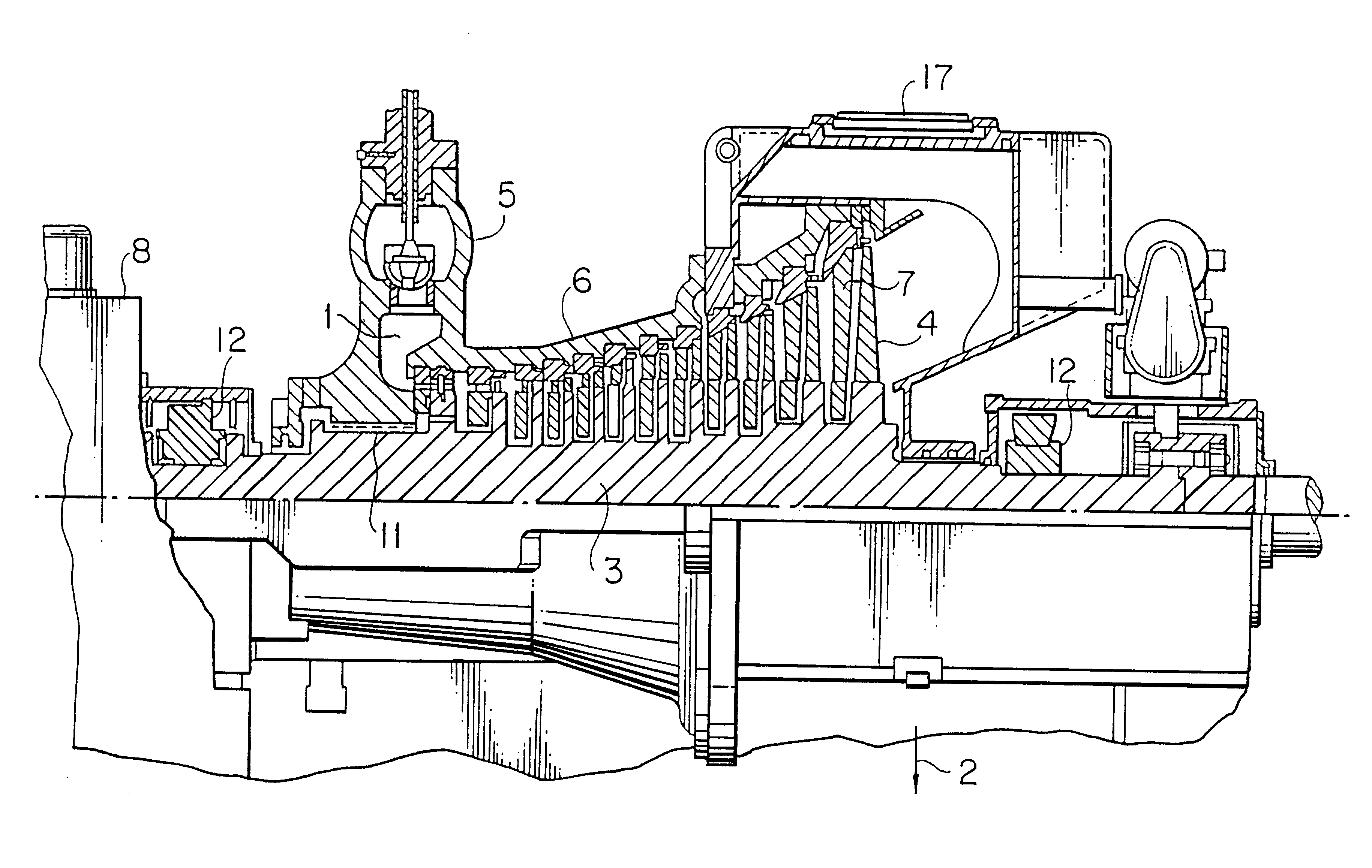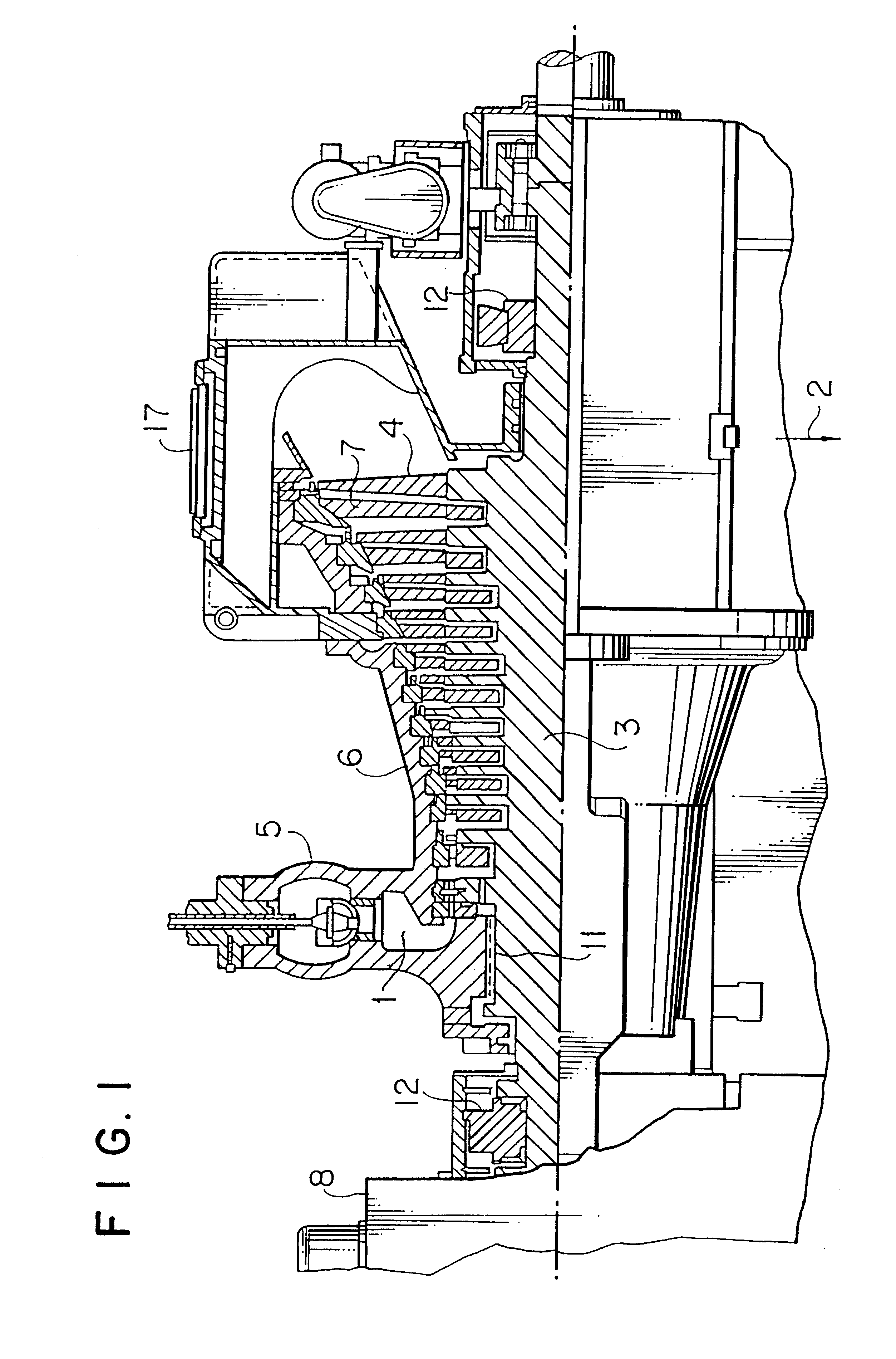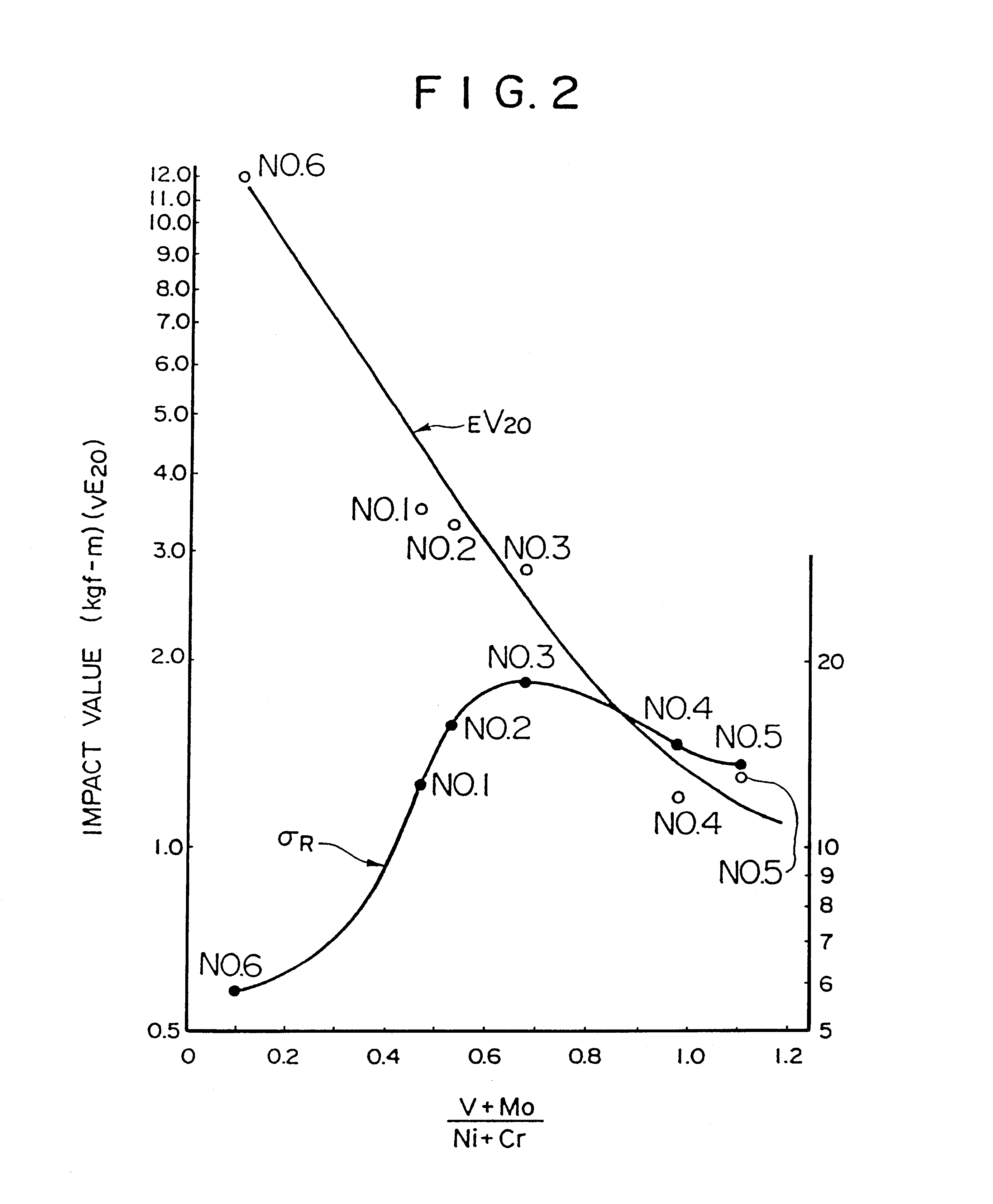Steam turbine, rotor shaft thereof, and heat resisting steel
a technology of steam turbine and rotor shaft, which is applied in the direction of wind motors with perpendicular air flow, waterborne vessels, machines/engines, etc., can solve the problems of inferior high temperature toughness, so as to improve the effect of creep rupture strength and high impact value, and the effect of superior high temperature strength
- Summary
- Abstract
- Description
- Claims
- Application Information
AI Technical Summary
Benefits of technology
Problems solved by technology
Method used
Image
Examples
example 1
A turbine rotor according to the prevent invention is described below with reference to examples. Table 1 shows chemical compositions of typical specimens subjected to toughness and creep rupture tests, The specimens were obtained in such a manner that they were melted in a high frequency melting furnace, made to an ingot, and hot forged to a size of 30 mm square at a temperature from 850 to 1150.degree. C. The specimens Nos. 1, 3 and 7 to 11 are materials according to the present invention. The specimens Nos. 2, 4 to 6 were prepared for the comparison with the invented materials. The specimen No. 5 is a material corresponding to ASTM A470 Class 8 and the specimen No. 6 is a material corresponding to ASTM A470 Class 7. These specimens were quenched in such a manner that they were made to have austenitic structure by being heated to 950.degree. C. in accordance with a simulation of the conditions of the center of a rotor shaft integrating high and low pressure portions of a steam tur...
example 2
Table 5 shows typical chemical compositions (wt %) of specimens used in an experiment.
The specimens were obtained in such a manner that they were melted in a high frequency melting furnace, made to an ingot, and hot forged to a size of 30 mm square at a temperature from 850 to 1250.degree. C. The specimens Nos. 21 and 22 were prepared for the comparison with the invented materials. The specimens Nos. 23 to 32 are rotor materials superior in toughness according to the present invention.
The specimens Nos. 23 to 32 were quenched in such a manner that they were austenitized being heated to 950.degree. C. in accordance with a simulation of the conditions of the center of a rotor shaft integrating high and low pressure portions of a steam turbine, and then cooled at a speed of 100.degree. C. / h. Next, they were annealed by being heated at 650.degree. C. for 50 hours and cooled in a furnace. Cr--Mo--V steel according to the present invention included no ferrite phase and was made to have a ...
example 3
FIG. 1 shows a partial cross sectional view of a non-reheating type steam turbine integrating high and low pressure portions according to the present invention. A conventional steam turbine consumes high pressure and temperature steam of 80 atg and 480.degree. C. at the mein steam inlet thereof and low temperature and pressure steam of 722 mmHg and 33.degree. C. at the exhaust portion thereof by a single rotor thereof, whereas the steam turbine integrating high and low pressure portions of the invention can increase an output of a single turbine by increasing a pressure and temperature of steam at the main steam inlet thereof to 100 atg and 536.degree. C., respectively. To increase an output of the single turbine, it is necessary to increase a blade length of movable blades at a final stage and to increase a flow rate of steam. For example, when a blade length of the movable blade at a final stage is increased from 26 inches to 33.5 inches, an ring-shaped band area is increased by a...
PUM
 Login to View More
Login to View More Abstract
Description
Claims
Application Information
 Login to View More
Login to View More - R&D
- Intellectual Property
- Life Sciences
- Materials
- Tech Scout
- Unparalleled Data Quality
- Higher Quality Content
- 60% Fewer Hallucinations
Browse by: Latest US Patents, China's latest patents, Technical Efficacy Thesaurus, Application Domain, Technology Topic, Popular Technical Reports.
© 2025 PatSnap. All rights reserved.Legal|Privacy policy|Modern Slavery Act Transparency Statement|Sitemap|About US| Contact US: help@patsnap.com



